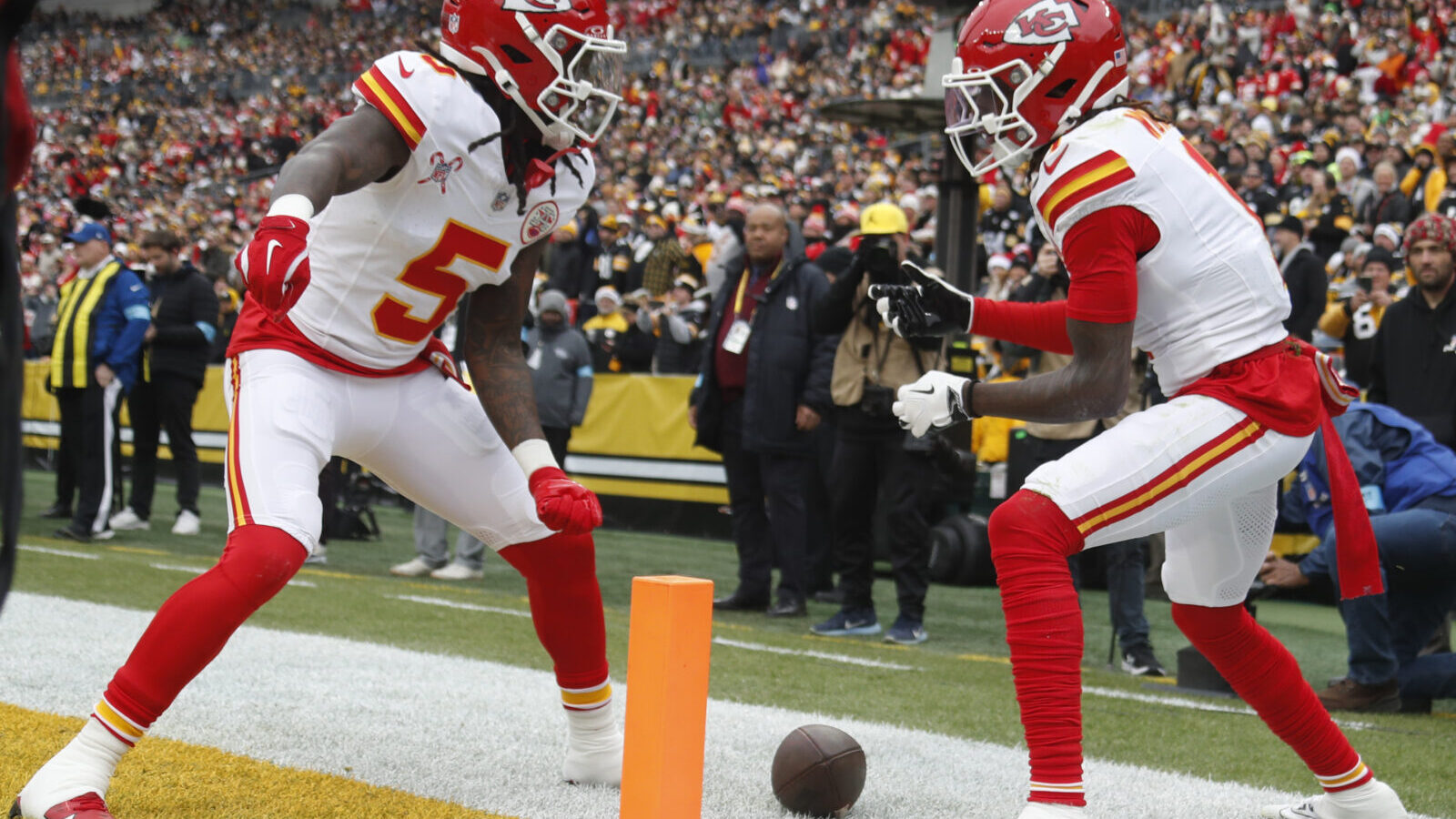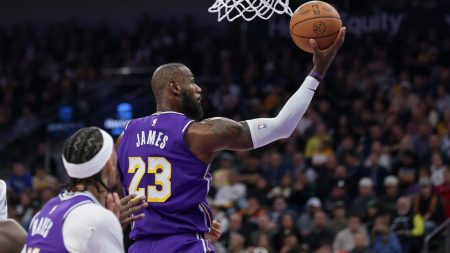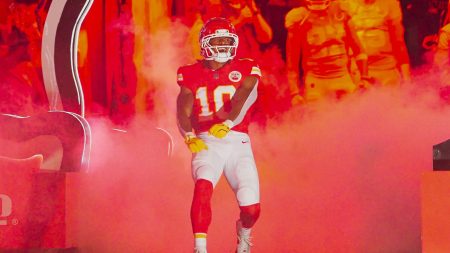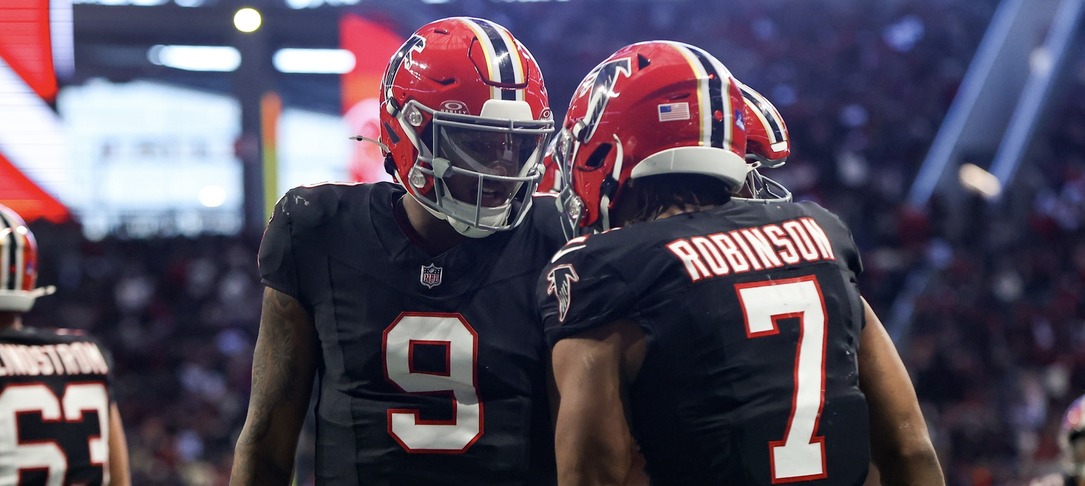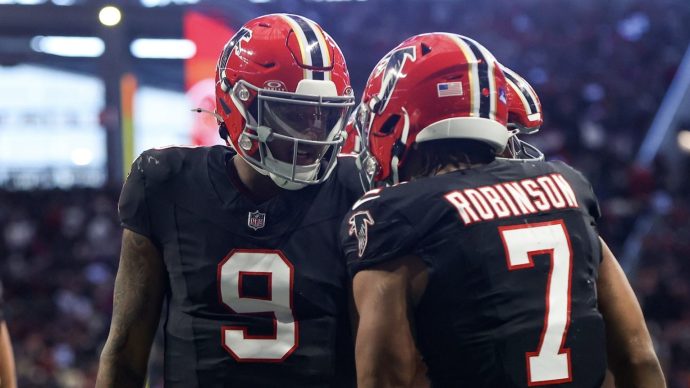Looking for the best NFL receiving props today?
Receiving prop bets and DFS picks are a fantastic way to engage with the game beyond just picking winners and losers. These plays focus on wide receiver, tight end, and running back receiving performances. They provide countless opportunities to put your football knowledge to the test.
In this guide, we break down the most popular types of NFL receiving props, show you how they work, and explain how to find value based on matchups, trends, and odds movement. You’ll also get our expert picks for the best receiving props available today, along with our favorite season-long futures to consider before the first snap.
Best DFS Apps in All States
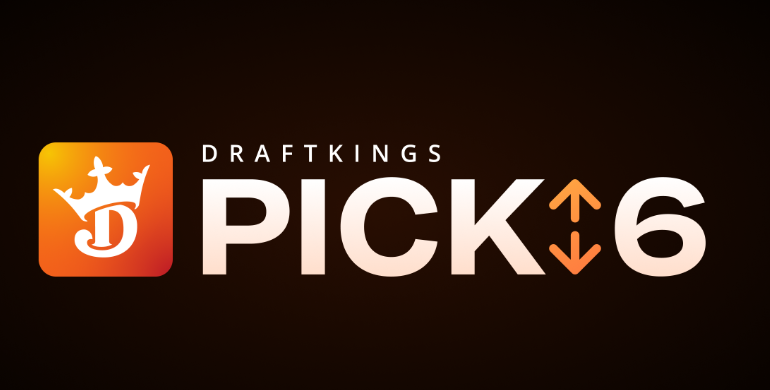

Best NFL receiving props available today
Below, we break down our best Week 16 receiving picks. If you’re looking for more prop bets, be sure to check out our best rushing props this week!
Xavier Worthy > 37.5 Receiving Yards
Rashee Rice is out for this one, and Worthy has had a really disappointing season so far. But here’s the thing: Gardner Minshew is a very capable thrower, and I think Kansas City will want to get some easy completions to the guys that are left standing.
Xavier Worthy has freakish speed and ability – we all know that. He ran a ridiculous 40-yard dash at the combine and can legitimately blow by defenders when given the opportunity.
The Titans are kind of soft-tanking, especially defensively. They have nobody back there. Amani Hooker is questionable, and Kevin Winston is on IR, and we’re basically looking at an entire secondary filled with guys who shouldn’t be anywhere near NFL rosters.
I think Worthy has a chance to blow by these guys on deep shots, but there’s also just going to be some miscommunication and probably some blown coverages with guys who have no experience playing with one another.
At 37.5 yards with this kind of depleted secondary? That’s a really low bar to clear.

DJ Moore > 45.5 Receiving Yards
The Bears will be without Rome Odunze and Luther Burden this week against Green Bay, which completely changes the target distribution. Moore has taken a big back seat this year in terms of usage, but he’ll have to get a lot more volume than he’s been getting if the Bears wanna be even remotely competitive in this game.
Bottom line: they’re just lacking talent on the outside right now. With their top receivers sidelined, Moore will have to step up whether he wants to or not. And I think getting around 50 yards is not too much to ask for in this scenario.
You gotta get the ball to your playmakers that are healthy, and he’s one of the only ones left for Chicago right now. The volume has to go somewhere, and Moore is the most talented receiver left standing.
Best NFL DFS Pick’Em Sites
We love the NFL DFS pick’em projections available at top-flight daily fantasy sites like Underdog, DraftKings Pick6, and Sleeper. They offer a very similar experience to player props.
You’ll often find a lot of value and strong payouts available at legal DFS sites. These apps are also available in many states that don’t yet have legal online sports betting.
Best sportsbooks for placing NFL receiving prop bets
Picking the right book for NFL receiving props can make a real difference to your overall experience and potential winnings. You want good odds, lots of options, and an app that’s easy to use, which helps you place bets fast without stress.
We looked at the top books for receiving props and compared their menus, promos, and app experience. Use this to find the one that fits how you like to bet so that you can focus on the picks instead of the platform.
DraftKings Sportsbook
DraftKings has a big menu of receiving props and a clean app that’s simple to navigate. It’s quick to find a player, tap the market, and place a bet, which saves time on busy slates.
You’ll see the usual statistics, including yards, receptions, and touchdowns, as well as extras such as the longest reception and first-quarter lines. They also post numbers early, so you get more time to study and lock in a price that you like.
They run NFL promos during the season that can add extra value to your receiving bets, which helps stretch your bankroll.

FanDuel Sportsbook
FanDuel offers a wide set of receiving props, and the site is easy to use. Their Same Game Parlay (SGP) tool is strong, so you can tie together multiple receiving picks for a bigger potential payout if you want to go that route.
Live betting is smooth. In-game receiving lines update quickly and settle fast, which means you can react to changes without fighting the interface. FanDuel often posts reception totals at -110 on both sides when some books add more juice so that you may keep a little more on wins.
They also run regular odds boosts on popular receiver props, which is why many players check them first on big game days.
Caesars Sportsbook
Caesars has a solid set of receiving props and sharp prices. Their lines sometimes differ from other major books, so you can line shop and grab value when the numbers don’t match elsewhere.
They shine on big primetime slates with extra receiving markets you won’t always find at other places. Caesars also posts early, which gives you more time to research before the market tightens.
New players who claim the welcome offer get ten 100% profit boost tokens up to $25 Max Bet Per Boost. That’s useful for testing different receiving angles at a better price. You also earn Caesars Rewards points while you bet, and you can redeem them at retail locations, which gives you a little extra back.
BetMGM Sportsbook
BetMGM is an official NFL partner and rolls out a deep board of receiving props. Their Easy Parlay tool makes it simple to build tickets with receiving legs plus other markets if you prefer a combo.
Odds are usually competitive. On reception totals, they sometimes hang a better line than rivals, which means a slight edge over time. The app is clean, and it’s easy to drill down to a specific player market without requiring many taps.
Newcomers can receive an offer of up to $1,500 on their first bet, with the stake refunded as bonus bets if the first wager loses. They also feature regular Lions’ Boost promos that enhance odds on popular receiving plays, which is why many bettors check their boosts each morning.
Fanatics Sportsbook
Fanatics is new, but they already have a strong setup for NFL receiving props. The design is clean and navigation is straightforward, so finding your market feels quick.
They don’t have as many niche props as the biggest books yet, but all the main receiving markets are there at competitive prices. Fanatics also leans into player-focused promos with boosted odds on receiver lines, which can add value on games you planned to bet anyway.
New users can claim up to $300 in bonus bets when betting $30. The platform is growing fast because it’s simple to use and the promos are easy to understand, which makes it a friendly place to start.
Single-game receiving prop bets explained
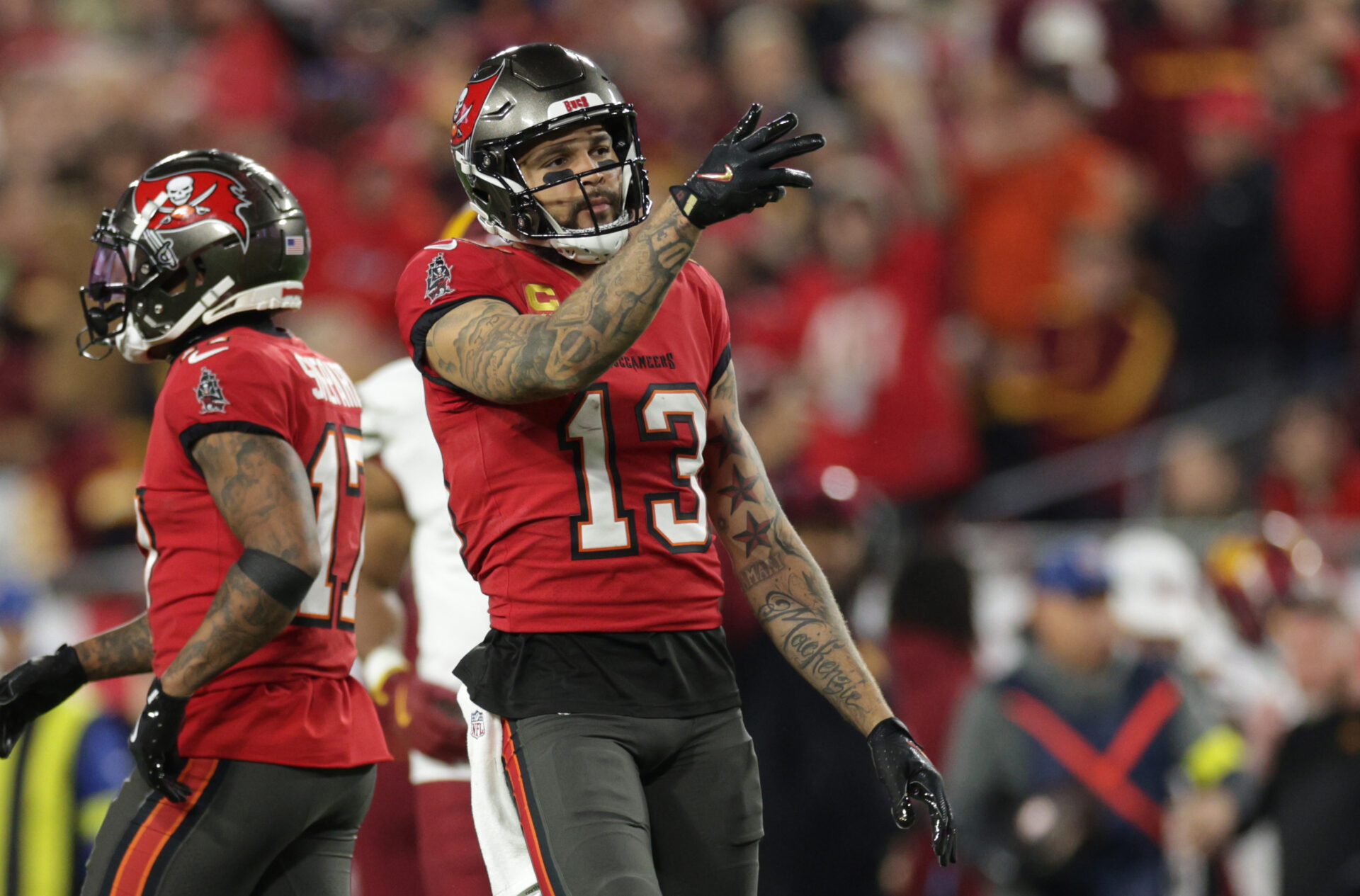
Single-game receiving props allow you to bet on how one receiver performs in a single game. You’re looking at his yards, catches, or a touchdown, not who wins the game.
These bets follow what’s happening in this game, how the drives go, the defensive matchups, and the quarterback’s performance. You see the impact right away, and the bet settles by the end of the game.
Player receiving yards over/under (single game)
With this prop, you pick over or under the number the book sets for a player’s receiving yards in this game.
Consider whether his team will throw a lot or run more, who’s guarding him, and how the quarterback is playing, as these factors indicate whether the number is fair.
Example: If Tyreek Hill is set at 89.5 receiving yards, the over wins at 90 or more, and the under wins at 89 or fewer.
Player receiving touchdowns (single game)
This bet asks if the player will catch a touchdown in the game.
To decide if it’s worth it, check red-zone chances, his scoring history, and how the defense handles passes near the goal line so you can spot a fair price.
Example: Justin Jefferson at +150 needs at least one touchdown for the bet to win.
Player receptions over/under (single game)
Here, you’re betting on how many catches the player makes in the game. His role, the team’s passing volume, and the matchup matter because targets turn into receptions.
Example: If Cooper Kupp is 6.5 receptions, 7 or more wins the over, and 6 or fewer wins the under.
Anytime receiving touchdown scorer
You’re betting that the player scores a receiving TD at any time in the game.
Check how often he gets the ball near the goal line and how often he scores, and look at the defense he’s facing so you can tell if the odds are worth a bet.
Example: Ja’Marr Chase at +120 wins if he scores at least one touchdown during the game. If he doesn’t, the bet loses.
Less common single-game receiving prop bets
These cover things like longest reception or first-half receptions. They focus on short windows and depend on the team plan and game flow, and this can give you a few niche angles if you like them.
Example: If DeVonta Smith’s longest reception line is 19.5 yards, a catch of 20 or more wins the over, and 19 or less wins the under.
Season-long receiving prop bets explained
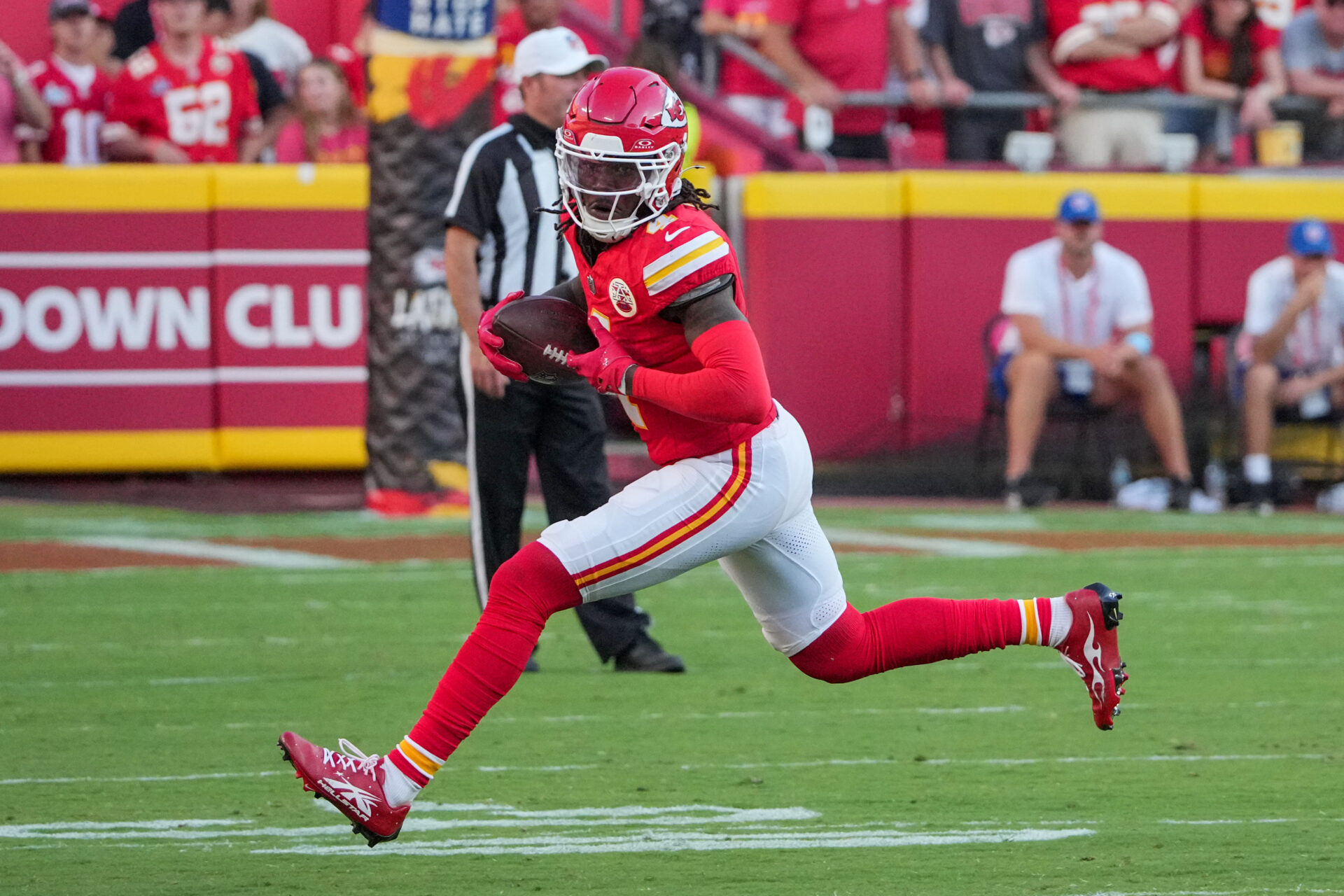
Season-long receiving props let you back a receiver for the whole year instead of one Sunday. You’re looking at talent, the quarterback, and the schedule over months, concentrating on the bigger picture.
They also keep you following that player every week, even when the final score doesn’t change your ticket.
Season receiving yards leader
You’re betting on which receiver finishes with the most yards for the season.
Check target share, quarterback reliability, and how the offense plays, because those things drive steady yardage. Add durability and matchup history to the mix. A reliable, high-volume receiver makes the strongest case for a bet.
Example: Justin Jefferson at +600 pays if he tops the league in yards; any other player finishing higher sinks the bet.
Season receiving touchdowns leader
You’re picking the receiver who scores the most touchdowns over the whole season.
Focus on red zone targets and the player’s role in the offense, which affects scoring chances from week to week.
Example: Ja’Marr Chase at +700 cashes only if he leads in touchdowns. If someone else passes him, the bet loses.
Player-specific receiving yards over/under
Books post a season-long yardage line for each receiver, and you choose over or under that number.
It mostly comes down to target volume, game flow, and how the offense is constructed, so you have to align the number with how he’s used.
Example: Cooper Kupp’s line sits at 1,200 yards. 1,201 or more wins the over, while 1,199 or fewer delivers the under.
Player-specific receiving touchdowns over/under
You have to predict whether a receiver will score over or under a set number of touchdowns in the given season.
Check how often the player is used near the goal line and whether past seasons show steady end zone production. If so, it shows the role should carry over.
Example: Tyreek Hill at 8 touchdowns means 9 or more cashes the over, while 7 or fewer lands the under.
Season receptions over/under
Instead of yards or scores, this prop keys in on the number of catches over the season.
Look at how pass-heavy the team is and how targets are spread, which helps you judge expected volume.
Example: Amon-Ra St. Brown’s line is 90 receptions. 91 or more pays the over, while 89 or fewer the under.
Less common season-long receiving prop bets
Some books offer twists, such as betting on how many 100-yard games a receiver logs or whether he scores in a set number of contests.
These markets rely on consistency and a predictable schedule, which provides a clearer indication of who can consistently stack big weeks.
Example: A bet that a receiver hits five 100-yard games pays if he gets there; if he falls short, it’s a loss.
When do sportsbooks release receiving props?
Knowing when sportsbooks post NFL receiving props helps you grab value before injuries, lineup news, or betting swings move the odds, which means you can act before the number changes.
Season-long props show up soon after the season ends, often around the NFL Draft in April or May. You’ll see markets for receiving yard leaders, touchdown leaders, and player totals for yards, catches, and touchdowns. Early numbers lean on last year’s stats, roster moves, and coaching changes, so players coming off injuries or a down year can be underpriced at first.
Single-game props for Sunday are usually up by Wednesday afternoon, while Thursday Night Football numbers often land on Tuesday. The biggest changes tend to come on Thursday or Friday once practice reports settle, and even a move of 5 yards or half a reception can point to real news on injuries, weather, or playing time.
The last 90 minutes before kickoff can be very good. The official inactive list, surprise weather, or late injury notes can flip a projection fast, so keep an eye on team reporters and check a few sportsbooks quickly before the lines move.
Tips and strategies for betting on NFL receiving props
Betting on NFL receiving props takes more than knowing the big names. You need a plan that combines statistics, timing, price hunting, and tight money management, which helps you spot value early.
Focus on the few stats that matter, not just the basic box score. Look at target share, air yards, yards after catch, red zone target rate, and routes run, as these metrics indicate how a receiver is actually utilized.
Compare the line and the odds at different sportsbooks. One sportsbook might list 62.5 while another lists 67.5 for the same player. Even half a reception can be the difference between profit and loss over a season, so pick the line that most helps you.
Manage your money with a simple, steady plan. Keep each prop to about 1 to 3% of your budget, spread your plays, and track results. Set a separate budget just for props and avoid chasing losses or increasing your bet size after wins, which helps you stay in the game when results fluctuate.
Research fast and in the right order. Check injuries first, especially at QB, the offensive line, and the defensive backs. Then look at where the receiver lines up (slot or outside), how the team shares targets, and how the game is likely to go. Underdogs throw more, and windy or rainy games usually mean fewer receiving yards. Slot receivers tend to be steadier on receptions, while outside guys swing more with the cornerback matchup.
Be ready to react. Late inactives, weather shifts, and even a coach’s quote to the media can move a line. Big, early bets at odd hours can hint at fresh news before it shows up everywhere, which lets you act before sportsbooks update the line.
Understanding why and when props move helps you make quicker, smarter calls, which often gets you in front of the crowd.
What common mistakes should we avoid when betting on NFL receiving props?
Even experienced bettors slip up at times. Knowing the traps helps you protect your bankroll over time.
Don’t rush a bet the second news breaks. A late scratch can matter, but you still need context like depth chart, scheme, and matchup, because knee-jerk plays miss the full picture.
Don’t ignore line movement. Check how and why the line moved before you place a bet. Some moves come from public hype, not respected bettors, which means you can misread the value.
Don’t stop at team ranks. A defense that ranks fifth against the pass might still struggle against slot receivers or tight ends. Look at individual matchups and how each team usually plays, so you see the real picture.
Live betting on NFL receiving props
Live props let you bet as the game unfolds. Lines trail the action for a bit, which gives you chances when usage flips or a defense changes plan.
Watch targets, adjustments, and changes in how the game is going. Good chances show up after a slow start, right before halftime, or at the end of the game, or right after a defender gets hurt. Halftime is a good spot because sportsbooks rely on first-half stats, while you can guess the coming changes so that you can act before the next shift.
Use live bets to mitigate risk on a bad pre-game pick or to capitalize on a clear edge. Keep bets smaller, follow your plan, and avoid emotional bets, which helps stop a bad mood from wrecking your budget.
Live receiving props reward sharp eyes and quick, calm decisions, so you can find edges others miss.
How to Parlay NFL receiving props?
Parlays tie multiple props into one ticket for a bigger payout, but the risk jumps because every leg must hit.
Same-game parlays (SGPs) are popular. You can pair a receiver’s receptions over with his TD, or mix props across players and include totals or the spread, which helps you build a story that makes sense for that game.
Keep parlays tight. Aim for 2 to 3 legs, looking for legs that fit together, and only add picks you’d bet on individually. Use alternate lines to make a win more likely, and spread across games, so one bad game doesn’t ruin everything.
Make parlays a small part of your betting, about 10 to 20% of your daily budget. Treat them as upside plays, not your base plan. Two separate three-leg tickets are often better than one six-leg monster, which gives you more ways to cash something.
How do sportsbooks set & adjust NFL receiving prop odds?
Sportsbooks start with data and then react to bets. Knowing that process can help you find good prices, so you can pick your moment.
Setting the lines: data-driven foundations
Books use player history like target share, catch rate, yards after catch, red zone usage, and recent form. They also bake in the team’s scheme and how the coordinator spreads targets, which keeps the opener close to fair.
Defensive matchups & game conditions
They look at the likely cornerback matchup and whether a top corner will follow the receiver all game. They note how often the defense plays zone or man coverage and which routes are effective against each one.
A strong pass rush reduces deep throws because the quarterback has less time. Some defenses give up more catches to slot receivers or tight ends.
Weather and stadium matter too. High winds at 15+ mph, rain, or extreme cold push numbers down, while inddor arenas/domes lift them.
Expected game flow matters too. Teams likely to trail often throw more, which can push receiving lines higher.
Media influence & public perception
Injury news, coach quotes, and big analyst takes move public money. A hyped rookie can see a small bump even without the stats, which helps the book balance action.
Sharp betting & line movement
After lines go up, respected bettors spot and bet bad lines fast. If sharp money hits the same side across books, lines move right away. Sportsbooks manage risk across all props and keep adjusting as news and bets come in, which is why timing matters.
What resources help us stay updated on receiving props?
Use a mix of stats, news, and odds tools. Track target share, red zone usage, and average depth of target. Watch the weather and set alerts for injuries and status changes so that you can react before the number moves. Keep a short checklist for each bet: matchup grade, injuries, recent usage, and the best line across books.
By sticking to that routine, you’ll stay ahead of market swings and make cleaner, data-backed calls.
How to find and compare the best NFL receiving prop bets?
Start by comparing lines and odds across sportsbooks, then add in player use and matchup.
Keep the game context in view and move quickly when one line is out of step with the others, so you can take it before it changes.
Comparing NFL receiving prop odds
Comparing odds the right way helps you find better value. Try these moves:
- Compare the same prop at a few sportsbooks and take the best odds.
- Shop around for small differences in the yardage number and the odds.
- Choose between the easier yardage, like over 64.5, or the better odds, like -110 instead of -120, since both affect value.
Small gains add up over time, which helps you make more money.
Short-term trends to watch
Recent data beats full-season numbers most weeks. Focus on:
- Changes in who gets the ball: who’s getting more of the passes?
- Player changes: Changes in who’s on the field or how a player is used.
- Recent defense results: how that team has done against similar receivers.
Watch for games where a receiver’s role grows but the posted yardage or odds haven’t changed yet, because that’s where you can still get a good deal.
Impact of injuries and weather
Injuries and weather matter. Changes at quarterback or at the defender who covers receivers can change a receiver’s day, and wind over 15 mph hurts passing accuracy. Check this before you bet so you don’t take poor odds.
Tools for tracking and comparing props
Good tools and simple prediction pages help you compare odds, see how they change, and find good prices fast. Use odds sites like Action Network, Odds Checker, and The Lines to compare rushing props at different sportsbooks so you get the best price.
Use them in conjunction with the steps above to make cleaner choices and find better receiving props.
Conclusion
NFL receiving props continue to gain popularity, and for good reason. They let you focus on one player, then use basic info to find small advantages. Whether you’re betting during the game, making combo bets, or comparing odds across sportsbooks, success comes from preparation, paying attention, and a smart plan.
With the right tools, a steady plan, and a clear handle on what drives receiver results, you can turn what you know into smarter bets. Stay sharp and stay curious, and continually refine your approach as the game and market evolve.
The best bettors don’t just watch the game, they notice the small things. Go get it!
